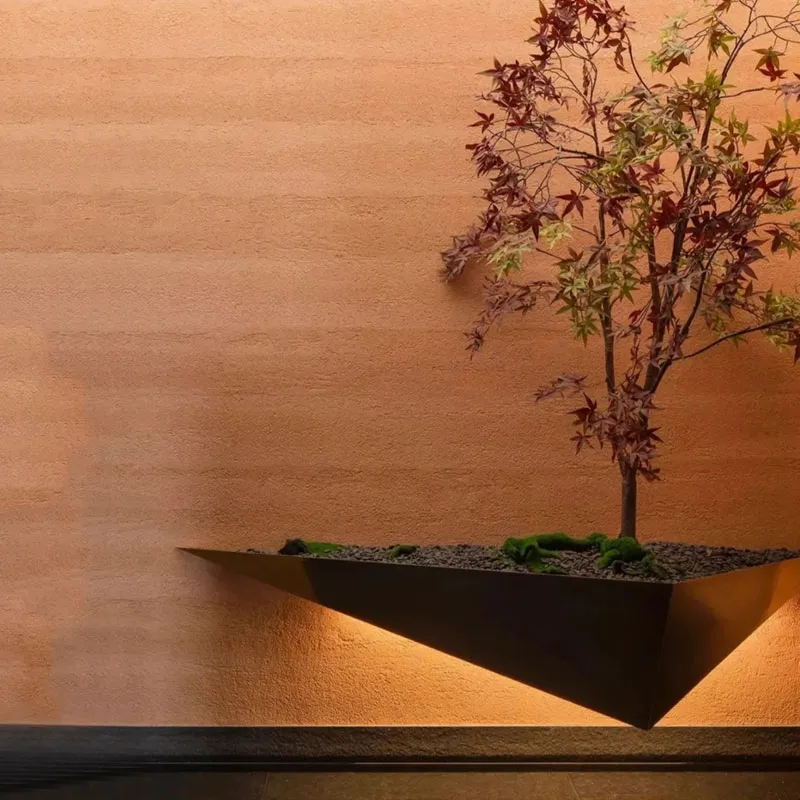Flexible Stone: A Revolutionary Material for Modern Design
2024-11-29
In the ever-evolving world of construction and interior design, flexible stone has emerged as a game-changing material that combines the timeless beauty of natural stone with modern versatility. Lightweight, adaptable, and aesthetically pleasing, flexible stone is making waves in various industries. Let's dive into what flexible stone is, its benefits, applications, and why it is gaining popularity among architects, designers, and homeowners.

What is Flexible Stone?
Flexible stone, also known as stone veneer or stone wallpaper, is a thin layer of natural stone adhered to a flexible backing material like fiberglass or resin. It retains the texture and appearance of authentic stone but is lightweight and pliable, making it easy to work with in applications where traditional stone might be too heavy or rigid.
The material is crafted by carefully slicing natural stones, such as slate or sandstone, into thin sheets, then laminating them onto the backing. This process preserves the unique veining, colors, and patterns of the stone while giving it flexibility.
Key Benefits of Flexible Stone
1. Lightweight and Easy to Install
Unlike traditional stone, flexible stone is incredibly lightweight, which simplifies transportation and installation. It can be cut and shaped with basic tools, eliminating the need for heavy machinery.
2. Durability
Despite its thinness and flexibility, the material retains the strength and durability of natural stone. It is resistant to moisture, UV radiation, and wear, making it suitable for indoor and outdoor use.
3. Aesthetic Appeal
Flexible stone showcases the same beauty as natural stone, offering a wide range of textures, colors, and finishes to suit any design style.
4. Versatility
Its pliable nature allows it to be applied to curved surfaces, uneven walls, and even furniture—areas where traditional stone would be impractical.
5. Eco-Friendly
Flexible stone production uses less material than full-sized stone slabs, reducing waste and minimizing environmental impact.
Applications of Flexible Stone
1. Interior Design
Flexible stone is a popular choice for interior walls, backsplashes, and accent features. Its lightweight nature makes it ideal for adding a luxurious touch to living rooms, kitchens, and bathrooms without the complexity of heavy stone installations.
2. Exterior Cladding
Architects are using flexible stone for exterior facades to achieve the look of traditional stone with less weight and cost. Its weather resistance ensures long-term performance even in harsh climates.
3. Furniture and Decor
The material is increasingly being used to create unique furniture pieces, such as tabletops and cabinet facings, as well as decorative elements like lampshades and picture frames.
4. Commercial Spaces
Flexible stone is a favorite in retail and hospitality design, where its ability to transform spaces quickly and economically is invaluable. It can be used in feature walls, signage, and column wraps.
5. Curved Surfaces
One of the standout features of flexible stone is its ability to conform to curved surfaces, opening up possibilities for design innovations like rounded walls, arches, and even ceilings.
Why Flexible Stone is Gaining Popularity
The growing demand for sustainable, cost-effective, and aesthetically versatile materials has positioned flexible stone as a preferred choice among designers and builders. Its adaptability allows it to bridge the gap between luxury and practicality, making it an attractive option for both high-end and budget-conscious projects.
Caring for Flexible Stone
Maintaining flexible stone is simple. A damp cloth is usually sufficient for cleaning. For exterior applications, periodic washing can help maintain its appearance. Avoid harsh chemicals that might damage the backing material.
Conclusion
Flexible stone is a revolutionary material that brings the elegance of natural stone into modern design with unmatched flexibility and practicality. Whether you're renovating your home, designing a commercial space, or experimenting with creative furniture concepts, flexible stone offers a world of possibilities.
Its blend of beauty, sustainability, and versatility makes it a standout choice in contemporary architecture and design. As the demand for innovative and eco-friendly materials continues to rise, flexible stone is set to shape the future of design and construction.
So, if you're looking to add a touch of sophistication and creativity to your next project, flexible stone might just be the perfect solution!


